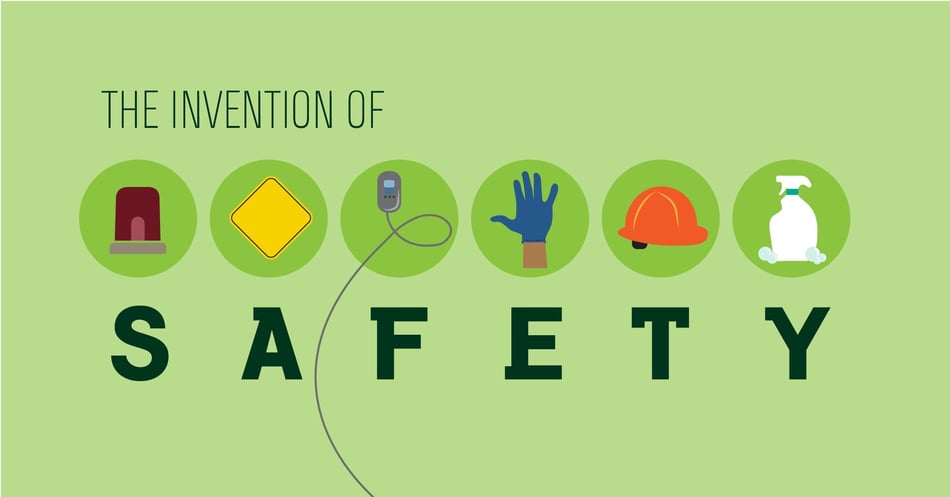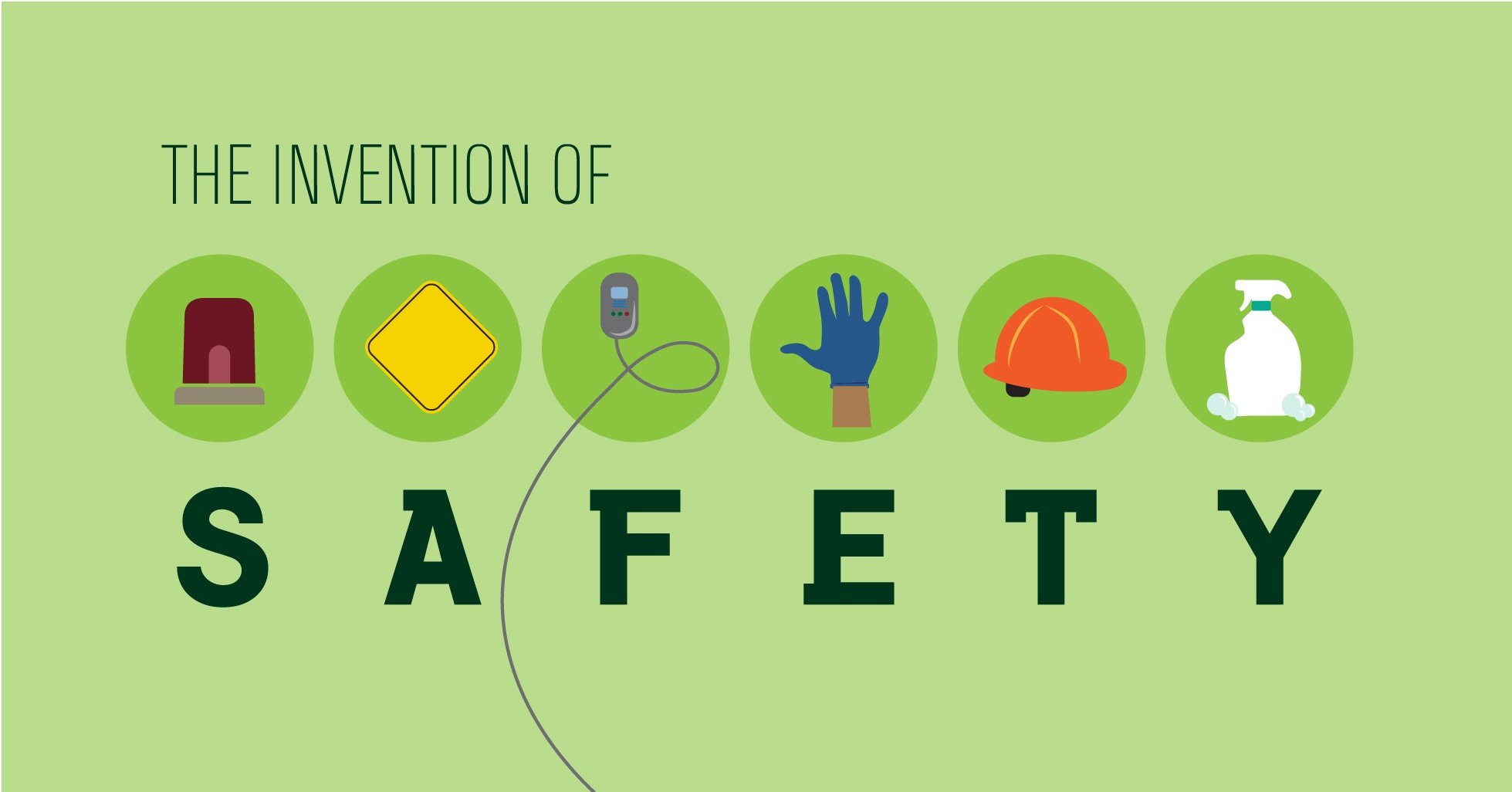The Invention of Safety


The concept of safety is nothing new: Anything that protects us from injury or death has surely been on the mind of humankind since we were hunter-gatherers on the savanna surrounded by carnivores. But mere survival is no longer enough! We want to be able to do what our hearts and minds imagine, but still be mindful of our weaknesses and vulnerabilities. As a result, every field of human endeavor has safety as an essential component, not the least of which are health and medical care. In today's post, we'll look at what unifies all safety concerns across all fields, and highlight some critical inventions that make hospital care safer for everyone.
Safety: Protects Our Bodies
As a species, humans are remarkably vulnerable. Despite our unmatched mental abilities, we lack other species' defense mechanisms; and because of our unique intelligence, we are always thinking up new ideas that can put our frail bodies at risk. For this reason, progress in safety has often involved inventions that protect us from bodily harm: Seat belts, sports padding, helmets. In medicine, there are many preventative measures that have improved our safety, such as proper nutrition, vaccines, and advanced environmental cleaning (from hand washing to Preventive|Biocidal Surfaces).
Safety: Enhances Our Senses
When our senses are not fine-tuned enough to keep us safe, technology has filled in the gap. Sensors on airplanes allow pilots to see at night and during storms, mirrors on cars allow us to compensate for blind spots, and weather satellites allow us to see changes in atmospheric conditions we could never perceive with our senses alone. In the medical field, numerous safety inventions enhance our senses: Microscopes and stethoscopes are just a few examples. A further layer of safety comes in with the establishment of evidence-based protocols for using these devices, guiding us in how to use our enhanced senses for the greatest benefit.
Safety: Gets Our Attention
Safety is often about noticing a potential issue before it becomes a problem. But we can't pay attention to everything at once, so some safety inventions have stepped in to monitor and alert. Alarms go off in factories to alert workers to unsafe conditions. A light turns on when our tire needs air. In medicine, various devices monitor patients' vitals and alert the nursing team when numbers drop, enabling a rapid response to a life-threatening situation.
Safety: Works When We Are Not There
We also can't be everywhere at once. In order to be at the right place at the right time to stop a potential injury, safety inventions have allowed machines and computers to act on our behalf during specific conditions. If a machine is overheating, a central computer can shut it off before it damages itself or surrounding workers. Smoke detectors activate sprinklers to contain fires. In medicine, there are devices that detect changes in blood sugar and dispense insulin automatically. Ventilators detect nerve signals in the body and adjust oxygen delivery accordingly. There are even inventions that help reduce the number of pathogens on surfaces between cleanings, namely, Preventive|Biocidal surfaces infused with copper.
Safety: Makes Up For Human Error
Finally, safety inventions make up for the fact that we are human, prone to error even in the best of circumstances. We get tired, lose count, get distracted - all those things that make us human. In medicine, there are many errors in medical records that are due purely to transcription mistakes - doses, treatments, results are copied over incorrectly by the person manually transcribing the record. The advent of electronic records has helped tremendously, even helping calculate doses, avoid dangerous prescription conflicts, warn of possible complications, and many more life-saving bits of information. Hand-washing detectors give rapid feedback to healthcare workers, helping them remember to wash their hands at all the required moments. And because we know that cleaning a hospital room is difficult to do perfectly, we have technology such as Preventive|Biocidal surfaces to continuously kill pathogens, serving as a safety net for routine cleaning.
Often, success comes as a result of knowing our weaknesses and working through them. We have to acknowledge where human error is unavoidable, and find ways to make up for it. We haven't let our biological limitations prevent us from examining the microscopic cell or the billion-light-year-distant star. Nor should we let our human errors prevent us from giving all our patients the best care possible. For this reason, the idea of safety in medicine has to start with an honest look at what science tells us we are just not good at doing on our own, and then look to technology to fill in the gaps.
![EOScu Logo - Dark - Outlined [07182023]-01](https://blog.eoscu.com/hubfs/Eoscu_June2024/Images/EOScu%20Logo%20-%20Dark%20-%20Outlined%20%5B07182023%5D-01.svg)




